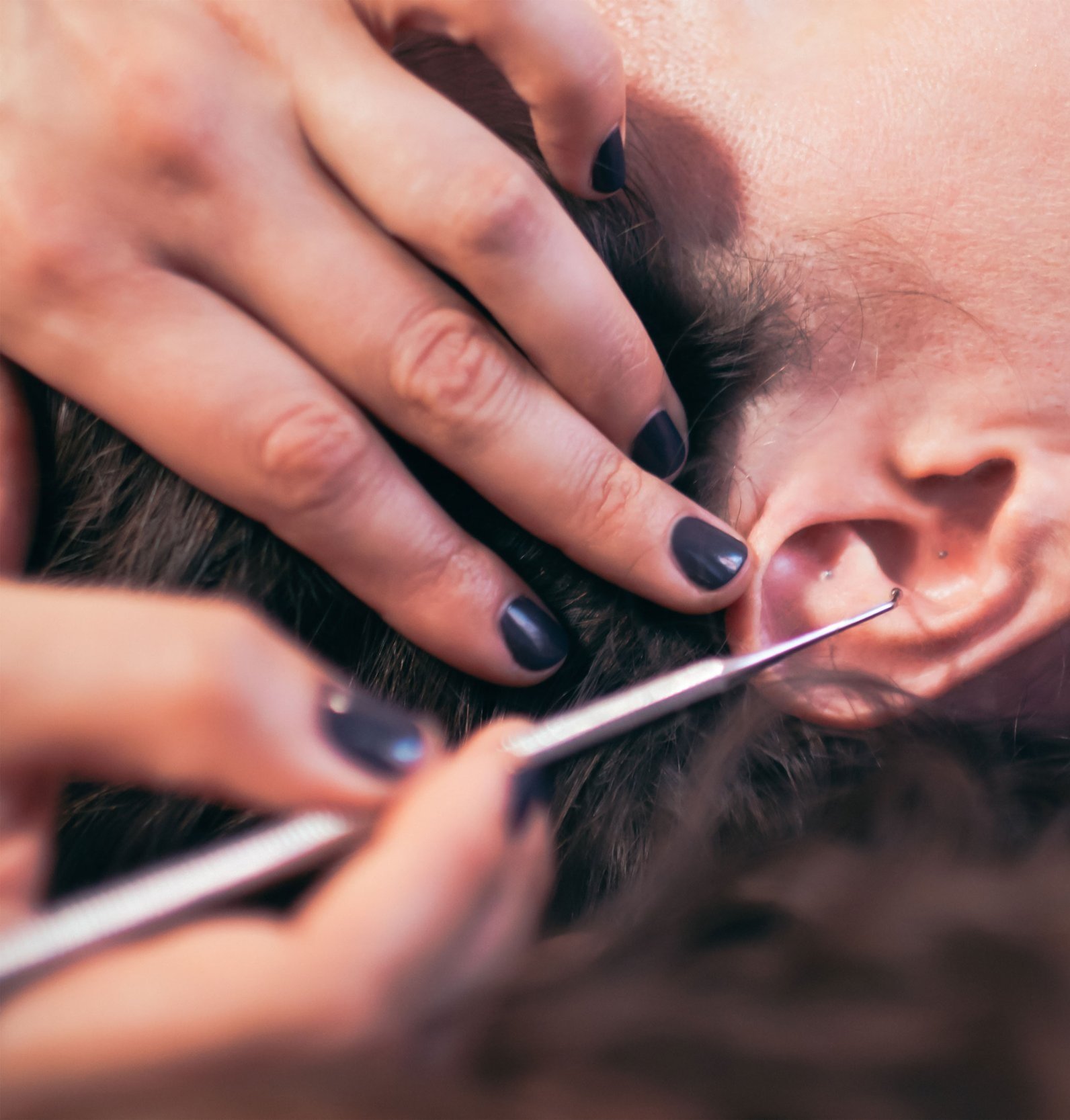EAR SEEDS
Based on the principles of acupuncture and East Asian medicine, auriculotherapy uses the ear as a tiny map for the whole body.
Because there are hundreds of acupuncture points in the ear — corresponding to just about every organ, hormone, and system in the body — many common health issues can be supported by using ear seeds. These tiny, stick-on gold “seeds” apply ultra-light pressure to the acupuncture points in the ear with the intention of stimulating a healing response; they are used for concerns like anxiety, depression, detoxification, digestive issues, fatigue, headaches, immunity, insomnia, libido, menstrual cycle, pain, quitting, stress, seasonal symptoms, and trauma.

And, you don’t need an acupuncture license or specialized training to safely apply a few ear seeds to some of the many recognized therapeutic points on the ears — you can apply this self-healing modality at home, yourself.
LEARN HOW WITH MY BOOK, SEED HEAL NOW
press featuring ear seeds

WHAT ARE EAR SEEDS?
Ear seeds consist of a metal or plant “seed” with a square or round adhesive backing. There are also Swarovski crystal ear seeds, if that’s more your style. They all work, so just pick some and try not to overthink it!
Ear seeds made from metals, such as stainless steel, silver plating, or gold plating, tend to be paired with clear adhesive tape, making them more discreet on all people; they can easily be mistaken for jewelry, if noticed at all. I prefer gold-plated ear seeds with clear, latex-free tape, which you can order here.
Some practitioners prefer ear seeds made with the traditionally-used vaccaria plant seed, a blood-moving (and therefore especially potent and invigorating) herb in the Chinese materia medica. However, these seeds are usually paired with a tan adhesive tape, so I don’t use them.
What is auriculotherapy?
Auriculotherapy is the stimulation of the auricle, or external ear, using needles or pressure (in the form of ear seeds, but needles, electrical stimulation, and lasers are also used) to treat symptoms and conditions located throughout the whole body. In auriculotherapy, the ear is treated as a microsystem, or a self-contained system within the larger system of the whole body.
The specific anatomy of the ear makes it unique among microsystems and helps explain why ear seeds work. To start, the ear is enervated by 4 nerves, a lot for such a small structure: the auriculotemporal, great auricular, vagus, and facial nerves. The working theory is that applying pressure to the external ear stimulates these nerves, which relay to the central nervous system, stimulating neurotransmitters that relax and reduce pain. There’s more and more research detailing these effects.
Beyond the nervous system connections and effects, though, other self-healing physiological processes are taking place: pressing on ear seeds has been shown to improve peripheral blood circulation, delivering more oxygen and nutrients throughout the body. Research has also found that systemic endorphins and enkephalins, our natural analgesics/painkillers, are elevated after auricular treatment, as in full body acupuncture treatments. This is all happening with acupressure too, by the way.
Auriculotherapy is a newcomer to East Asian medicine. Ear acupuncture was mentioned in some of the classic Chinese medical texts over the years, with specific references to its use for treating jaundice, epidemics, headaches, cataracts, and pain; however, no complete system or anatomical correspondences developed. In other parts of the world, cauterization (burning) of the ear to treat sciatic pain was performed in ancient Greek medicine, and was also part of the Islamic medical canon.
The modern systems of auriculotherapy originated in the late 1950s in Europe. The story goes that a French doctor, Paul Nogier, noticed cauterization scars on the ears of patients whose sciatic pain had been cured; he traced the scars to a lay practitioner in Marseille, Mrs. Barrin, who had learned to treat sciatic pain using the technique from her father, who had himself learned it from a Chinese practitioner. She applied a hot needle to a specific area of the external ear (later determined by Nogier to correspond to the lumbar/sacral junction), and people reported that their sciatic pain disappeared quickly.
Nogier and other practitioners in France and Europe developed a complete system of anatomical correspondences between the ear and the rest of the body. Using practical experience and research, Nogier and his colleagues discovered that the ear showed correspondences in an inverted somatotopic (or body topography) representation, more colloquially known as the shape of an inverted fetus as it would be resting in the womb.
Chinese acupuncturists, tasked by Mao Zedong with reviving the use of acupuncture and traditional Chinese medicine, learned of Nogier’s work in 1958, and from there quickly studied, developed, and applied auriculotherapy far beyond what had been in practice before. Accordingly, two complete effective systems developed — the Chinese and French systems — which have both overlap and differences, and which have both been further developed in different parts of the world.
Today, many types of healthcare practitioners use auriculotherapy — acupuncturists, naturopaths and osteopaths, physicians, dentists, chiropractors, and therapists.





